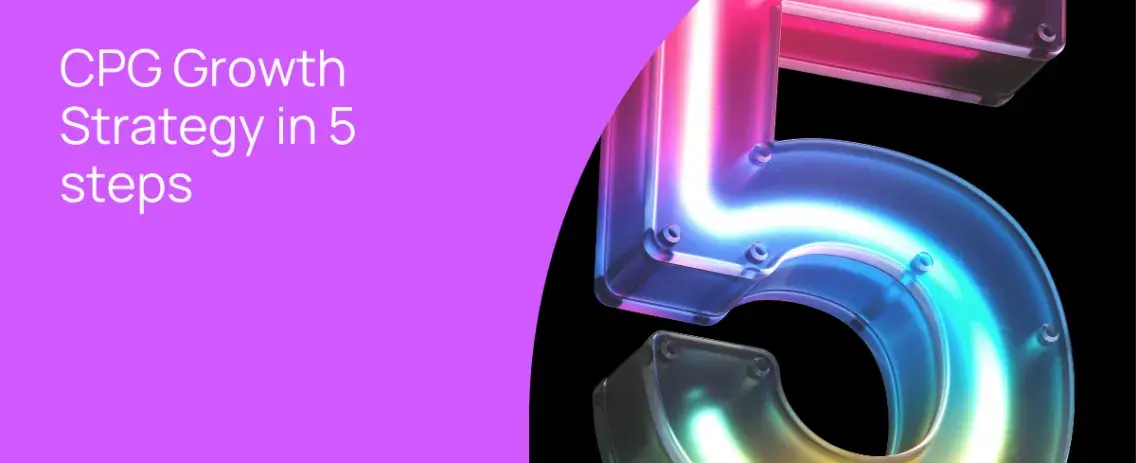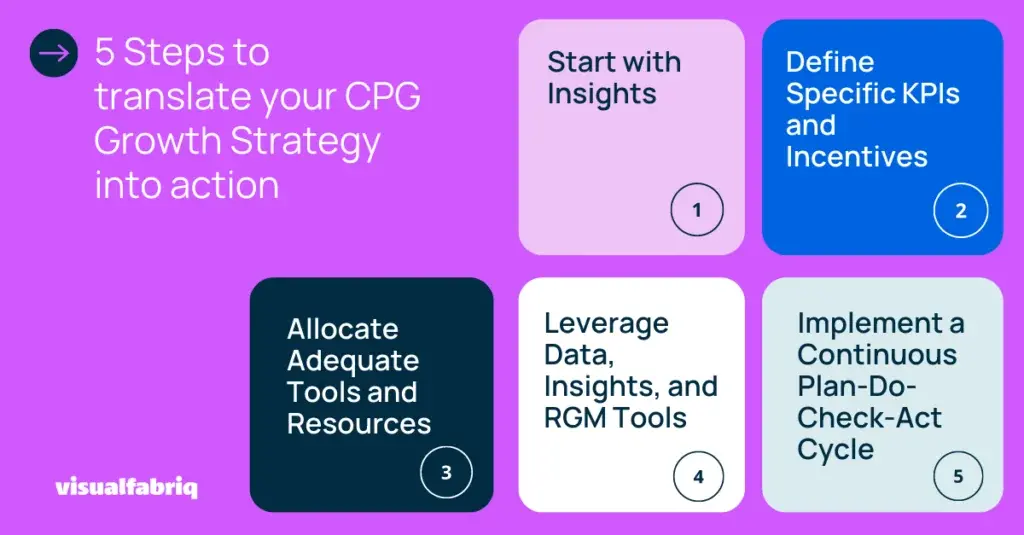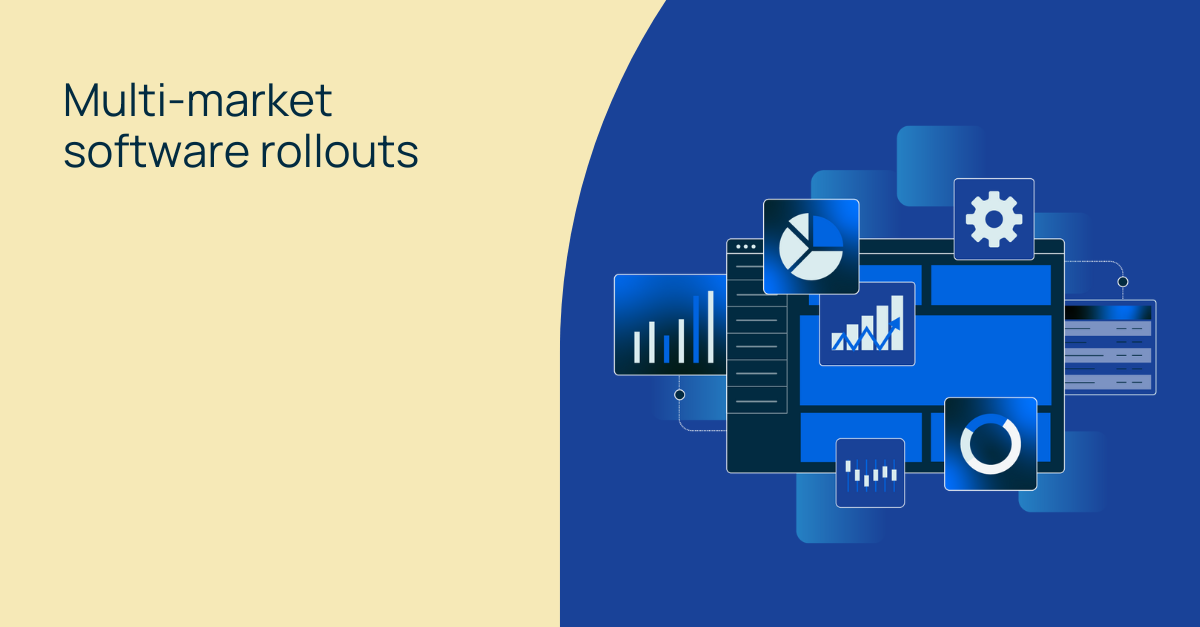
Five steps to translate your CPG growth strategy into action
Industry leaders are intensifying efforts to enhance their CPG growth strategy, while managing costs, effectiveness, and evaluating new avenues of opportunity. Technology can play a vital role here, simplifying the process, providing a bird’s-eye view throughout, and improving efficiency.
However, translating the strategy into actionable plans that drive revenue and optimize results is a challenge. To empower CPG sales teams, it is essential to follow a systematic approach that aligns with the overall growth strategy. In this blog post, we will, therefore, explore five steps that can help CPG companies transform their growth strategies into actionable and effective plans.
CPG growth strategy – Step 1: Start with insights
Any CPG growth strategy must be built on a solid foundation of consumer, shopper, and customer insights. These insights not only offer valuable information about market trends and consumer behavior, but also about channel development and competitor activities. All of these are critical for developing a winning strategy. Therefore, commercial teams need to understand the relevant market dynamics, customer preferences, and emerging trends to tailor their approach and drive growth effectively.
CPG growth strategy – Step 2: Define specific KPIs and incentives
Once the growth strategy is in place, it is crucial to identify specific key performance indicators (KPIs) and incentives to measure progress and success. These KPIs should align with the strategic goals and focus on both top-line growth and profitability. For instance, KPIs could include net sales growth, gross profit margin improvement, and return on investment for promotion initiatives. Revenue and profitability targets are often set by headquarters. If this is the case, commercial teams often face the challenge of disaggregating those targets and mapping them to underlying customers and categories as well as setting supporting KPIs, such as distribution targets. Defining these metrics helps sales teams stay on track and work towards achieving the growth objectives.
CPG growth strategy – Step 3: Allocate adequate tools and resources
Revenue Growth Management (RGM) in CPG requires robust analytical capabilities and access to the right data. To avoid excessive manual work, it is key to have software which can automate the combination of relevant data sources, preferably also adding prediction models. Furthermore, commercial teams need to have the expertise to translate these valuable insights into action plans and recommendations. Therefore, it is essential to hire professionals who can interpret data, identify opportunities, and develop actionable plans that drive profitable growth. Adequate resources and skillsets ensure that the strategy can be effectively executed from a strategic level down to the operational level.

CPG growth strategy – Step 4: Leverage data, insights, and RGM tools
In today’s data-driven world, CPG companies often have an abundance of data. However, the key to success is leveraging the right data and insights to make informed decisions. With the presence of skilled resources and dedicated software, sales teams can focus on making data-driven decisions. To do so, they will have to combine internal and external sources such as consumer research and syndicated data. This enables them to form concrete and actionable plans that align with the CPG growth strategy.
Basic tools like Excel may be sufficient for those taking the first steps into growth management. But as both ambition and complexity grow, CPG companies will find they must invest in more professional RGM tools. These tools not only help streamline processes, but also optimize decision-making and uncover hidden opportunities, contributing to more significant revenue growth.
CPG growth strategy – Step 5: Implement a continuous Plan-Do-Check-Act cycle
To ensure the success of a growth strategy in CPG, it is crucial to adopt a continuous improvement approach. The Plan-Do-Check-Act (PDCA) cycle is a valuable tool for sales teams to achieve this. It involves:
Planning: Developing actionable plans based on the growth strategy, KPIs, and insights.
Doing: Executing the plans efficiently and effectively in the market.
Checking: Reviewing the execution and measuring performance against set targets and KPIs.
Acting: Making necessary adjustments and improvements based on the findings and insights from the check phase.
The PDCA cycle helps sales teams identify success stories, gaps, and root causes of performance variations. Consequently, it allows for data-driven decision-making and helps companies stay agile in the face of dynamic market conditions. To achieve this, tools that support strategic planning and allow continuous plan adjustments are essential. Moreover, full integration of internal and external results is crucial, creating a timely feedback loop to review performance against targets.

Takeaways
As we’ve seen, translating a growth strategy into action is crucial for driving revenue growth and optimizing results in the CPG industry. To empower sales teams, CPG companies should follow a systematic approach that encompasses insights, specific KPIs, adequate resources, data-driven decision-making, and a continuous improvement cycle.
Firstly, by starting with a strong foundation of insights and aligning KPIs with the strategic goals, sales teams can create a clear roadmap for achieving success. Additionally, having adequate resources, skilled personnel, and the right software ensures that the strategy is executed efficiently. Furthermore, leveraging data and commercial insights enables sales teams to make informed decisions, leading to actionable plans that deliver results. Lastly, the PDCA cycle helps sales teams stay agile, allowing them to continuously improve their performance and seize growth opportunities in the dynamic CPG landscape.
By integrating these five steps into their operations, consumer goods companies can unleash the full potential of their growth strategy and propel their sales teams to greater heights of success. A well-executed growth strategy translates into increased market share, improved profitability, and stronger customer relationships. As a result, it positions CPG companies for sustainable growth and long-term success.
How Visualfabriq helps
Visualfabriq offers advanced revenue forecasting and optimization software. The modular solutions are tailored to the specific needs of the CPG industry and support key RGM processes. The software empowers commercial teams with innovative tools to:
- Efficiently manage data,
- Analyze commercial performance drivers
- Optimize revenue growth and profitability
With Visualfabriq, you can seamlessly align your growth strategy with actionable plans. You can set and track KPIs, and make data-driven decisions for sustainable success.
Would you like to explore how our software can revolutionize your revenue management and growth efforts? In that case, we invite you to book a personalized demo with us. Our team of experts will then walk you through the features and benefits of our software, demonstrating how Visualfabriq can be the catalyst for your CPG company’s revenue growth journey. Book your demo today and take the first step toward unlocking your full growth potential.


.png)
.png)